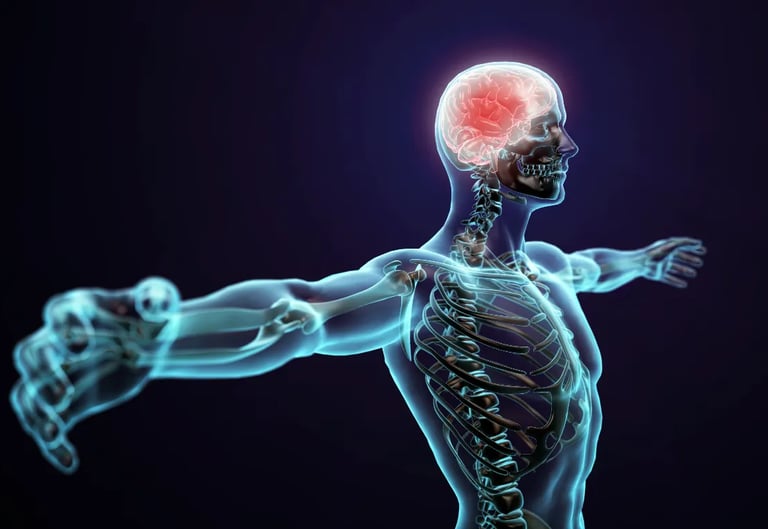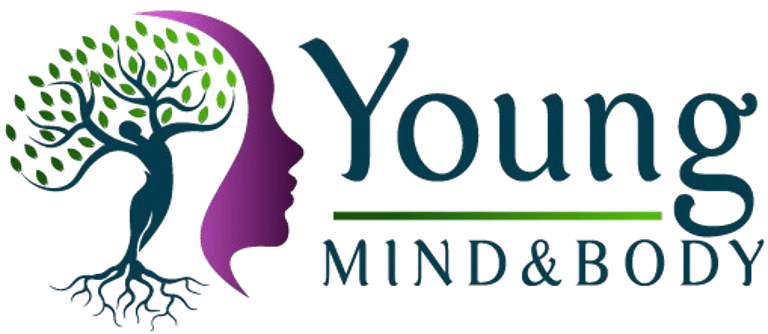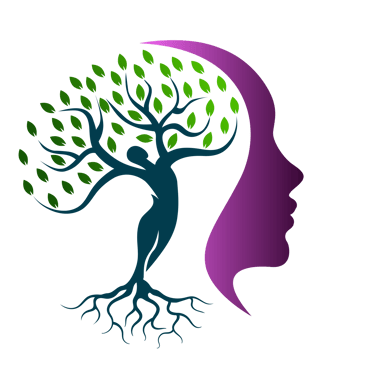
What Are Neuroplastic Symptoms?
Back Pain/Sciatica
Headache/Migraine
Fibromyalgia
Pelvic Pain
Complex Regional Pain Syndrome
Pain with Joint Hypermobility
A neuroplastic symptom is pain or illness originating from physical changes in the brain's nerve pathways rather than damage in the body. These nerve pathways tell the body what to do and how to feel, resulting in very real physical symptoms (everything from pain to diarrhea to flushing of the skin).
When we have physical symptoms, we naturally look for "issues in the tissues." However, when neuroplastic symptoms are present there often will be no injury or disease found in the tissues of the body, despite very REAL physical symptoms. If injury/disease is found in the body, treatments addressing the tissues won't help as expected.
Some find this analogy helpful: Computer software (your brain and nervous system) tells the hardware (your body) what to do. Sometimes it may appear that the hardware is malfunctioning when it's really the software signals it's receiving that are the issue. And often, even when the hardware is a bit older or "banged up," it can still work just fine if it's running the right software.
Neuroplastic symptoms are EXTREMELY common.
4/10 people seen by primary care physicians have neuroplastic symptoms.
The good news is that nerve pathways in the brain can be retrained.
Chronic neuroplastic symptoms can be eliminated through neuroplastic symptom retraining (a mind-body approach).
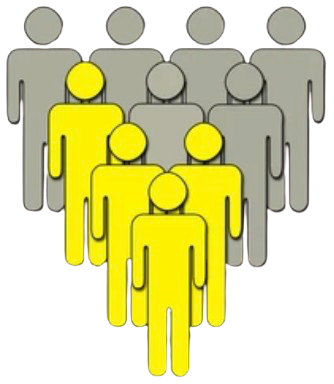


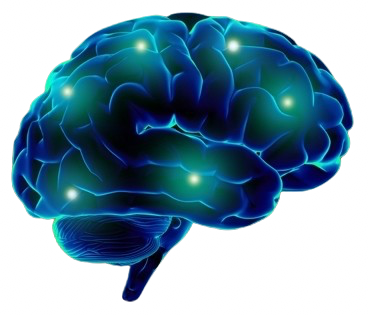
1,2,3
4
Brinjikji W et al. (2015). Systematic Literature Review of Imaging Features of Spinal Degeneration in Asymptomatic Populations. American Journal of Neuroradiology 36:811–16.
Thirty-three articles reporting imaging findings for 3110 individuals who had no symptoms were reviewed. Disk degeneration ranged from 37% in 20-year-olds to 96% of 80-year-old individuals. Disk bulge was present in 30% of those 20 years of age and increased up to 84% of those 80 years of age. Disk protrusion increased from 29% of those 20 years of age to 43% of those 80 years of age. Again, all of these individuals had no symptoms.
Jensen, M.C., Brant-Zawadzki, et al. (1994). Magnetic resonance imaging of the lumbar spine in people without back pain. NEJM, 331(2), 69-73.
“A classic study in which MRIs were performed on 98 people with no back pain. They found that only 36% of these people had normal spines, the other 64% had various evidence of disc degeneration. “Given the high prevalence of these findings and of back pain, the discovery by MRI of bulges or protrusions in people with low back pain may frequently be coincidental.”
Englund, M., Guermazi, A., Gale, D., et al. (2008) Incidental meniscal findings on knee MRI in middle-aged and elderly persons. NEJM, 359(11), 1108-15.
Knee MRIs from 991 subjects, ages 50-90 years old. The findings indicated that meniscal tears are common in the general population and increases with age. However, 61% of the subjects who had meniscal tears in their knees had not had any pain, aching, or stiffness during the previous month.”
Haller H, Cramer H et al (2015). Somatoform disorders and medically unexplained symptoms in primary care: A systematic review and meta-analysis of prevalence. Deutsches Ärzteblatt International, 112(16), 279-287.
A review of 32 studies from 24 countries published from 1990 – 2012. At least one type of somatoform disorder in 26% to 35% of primary care patients. The percentage of patients complaining of at least one medically unexplained symptom ranged from 40% to 49%.
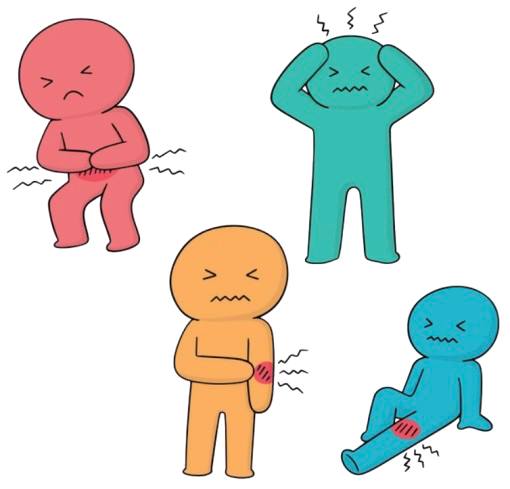

Irritable Bowel Syndrome
Chronic Fatigue
Functional Neurological Disorder
Interstitial Cystitis
Vertigo/Dizziness
Ringing in the ears (Tinnitus)
Learn more about Neuroplastic Symptoms and take a self-assessment quiz from the experts at the Association for the Treatment of Neuroplastic Symptoms:
Symptoms started/occur during times of stress
Symptoms started without injury
Multiple symptoms or multiple parts of the body
Symptoms spread, move, or vary in intensity
Symptoms are triggered by the external environment (weather, time of day, sounds, smells, etc)
Childhood adversity (anything you wouldn't want a child you know to experience)
Traumatic life events
Detail oriented, hardworking, perfectionistic, highly self-critical, or low self-esteem
People pleasing, seeking approval, neglecting your own needs, or difficulty with assertiveness
Unbalanced or Toxic Relationships
Stressful lifestyle, Anxiety, or Depression
1
2
3
4


